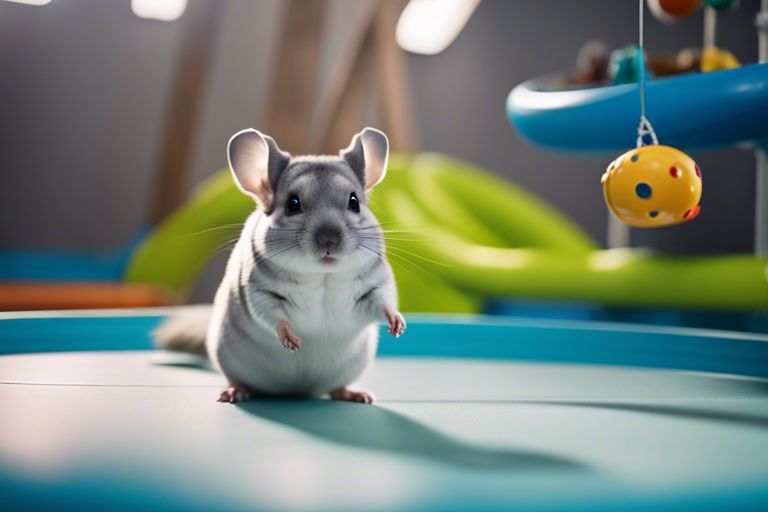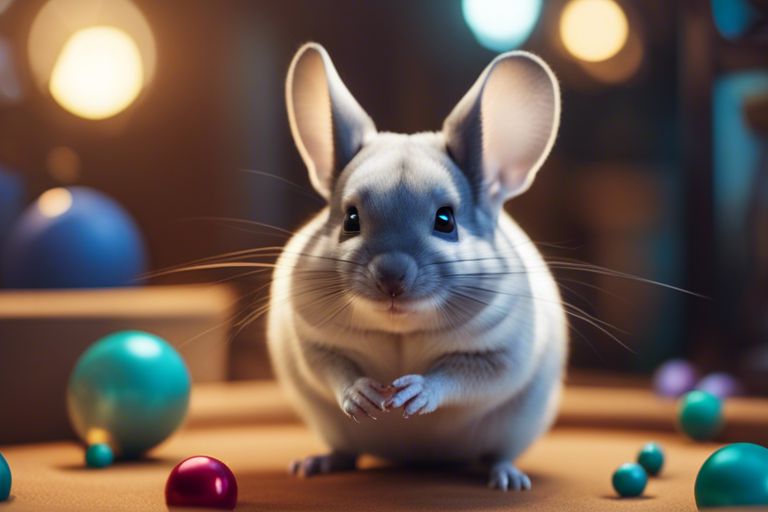If you’ve noticed your chinchilla bouncing and leaping around its cage, you may be wondering what this behavior signifies. Chinchillas are naturally curious and energetic, and jumping is one of the many ways they express themselves. This guide will explore why chinchillas exhibit this behavior, what it may indicate about their well-being, and how to create an ideal environment for their physical and emotional needs.
Key Takeaways:
- Enthusiastic Behavior: Chinchillas may jump around out of excitement or happiness.
- Exercise and Exploration: Jumping provides exercise and mental stimulation, especially if their environment is enriched.
- Stress or Anxiety: Excessive jumping can indicate stress or discomfort, so monitor their behavior closely.

The Nature of Chinchilla Jumping
Normal Activity Patterns
Jumping is a natural part of a chinchilla’s activity. These small, agile rodents are known for their energy and are accustomed to behaviors like jumping, climbing, and running, which help them stay active and alert. In the wild, these actions allow them to navigate rocky terrains and evade predators.
The Significance of Jumping
Jumping plays a crucial role in chinchilla behavior, allowing them to exercise, release energy, and explore their surroundings. In captivity, it also serves as an essential form of play, helping chinchillas investigate and interact with their environment. A habitat that allows for jumping and climbing promotes their physical and mental well-being.
Factors Influencing Increased Jumping
While jumping is normal, certain factors can cause increased activity levels. Understanding these triggers helps chinchilla owners better cater to their pets’ needs.
Environmental Stimulation and Enrichment
Chinchillas are highly active and need plenty of stimulation. Without enough toys or space, chinchillas may jump excessively as a way to release pent-up energy. Providing an enriched environment with toys, tunnels, and climbing platforms can encourage healthy, balanced behavior.
Health and Well-being Concerns
Excessive jumping could indicate discomfort or stress. Pain, dental issues, or muscular discomfort can lead to increased jumping as a coping mechanism. Anxiety may also cause chinchillas to jump more frequently, so it’s important to observe for signs of discomfort, such as reduced appetite or changes in behavior.
| Possible Triggers | Description | Management Tips |
|---|---|---|
| Lack of Stimulation | Insufficient mental and physical activities | Add toys, tunnels, and hiding spaces |
| Anxiety or Discomfort | Signs of stress or fear in their environment | Minimize loud noises, sudden movements, and bright lights |
| Health Issues | Pain from dental problems or muscle discomfort | Monitor behavior and consult a veterinarian if needed |
Managing and Responding to Jumping Behavior
Creating a Safe and Stimulating Habitat
Provide a variety of toys and ample space for exercise to help manage jumping behavior. Incorporate items like chew toys, tunnels, and platforms that encourage exploration. Ensure the habitat is escape-proof and free from hazards to prevent injury during active play.
- Add Variety: Rotate and introduce new items to maintain your chinchilla’s interest.
- Provide Space: Make sure their enclosure is large enough for jumping and climbing, as a spacious environment promotes natural activity patterns.
When to Consult a Veterinarian
If excessive jumping is accompanied by concerning symptoms like appetite changes, lethargy, or stiffness, consult a veterinarian with experience in small animals. Jumping can sometimes indicate underlying health issues, so it’s best to seek professional advice to ensure your pet’s well-being.
Summary
If your chinchilla is jumping frequently, it may simply be expressing excitement or engaging in play. However, excessive jumping can also be a sign of stress or discomfort. Observing their environment and behavior can help determine the cause. Providing a comfortable, enriched living space with opportunities for exercise and mental stimulation reduces stress and excessive jumping. When in doubt, consult with a veterinarian or chinchilla expert to ensure your pet’s health and well-being.
FAQ
Q: Why does my chinchilla jump around so much?
A: Chinchillas are naturally energetic and agile animals, and jumping is a normal part of their behavior. They may jump around to express excitement, explore their environment, or release excess energy.
Q: Can jumping be a sign of stress or anxiety in chinchillas?
A: Yes, excessive jumping can sometimes indicate stress or anxiety. If your chinchilla’s jumping seems frantic or is accompanied by other signs of stress, like hiding, decreased appetite, or fur chewing, it may be a sign of discomfort or fear.
Q: How can I tell if my chinchilla’s jumping is due to excitement or a health issue?
A: Jumping due to excitement is usually playful and accompanied by other happy behaviors, like soft vocalizations and exploring. If the jumping is excessive or seems restless, and you notice changes in appetite, energy, or mobility, consult a veterinarian to rule out health concerns.
Q: How can I make my chinchilla’s habitat more stimulating?
A: You can add enrichment items such as chew toys, tunnels, and platforms for jumping and climbing. Rotating toys and introducing new items regularly also keeps their environment engaging and prevents boredom.
Q: When should I be concerned about my chinchilla’s jumping behavior?
A: Be concerned if the jumping behavior is persistent, excessive, or accompanied by other symptoms like lethargy, appetite changes, or signs of pain. If in doubt, consult a veterinarian to ensure your chinchilla’s health and well-being.
Q: Is it normal for chinchillas to jump at night?
A: Yes, chinchillas are crepuscular, meaning they’re most active during dawn and dusk. Nighttime jumping is typical as they engage in play and exploration, so providing a safe, enriched environment is essential.
